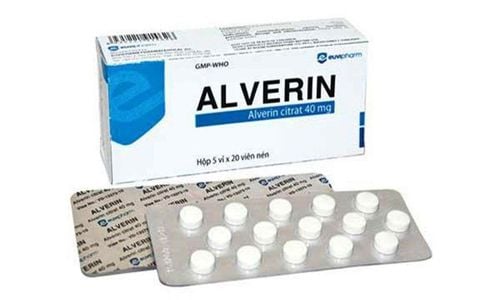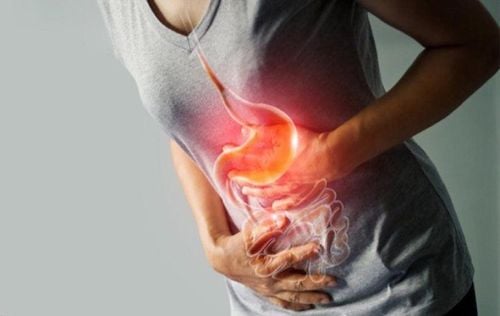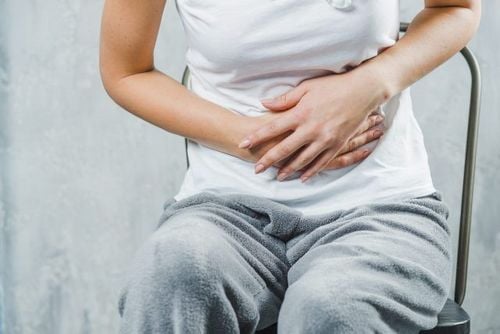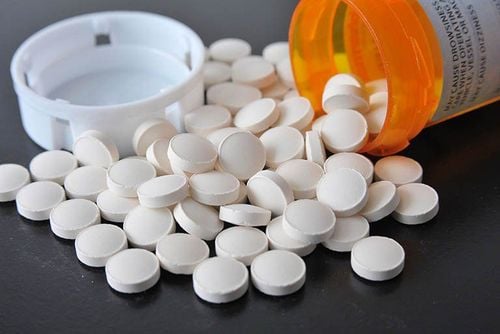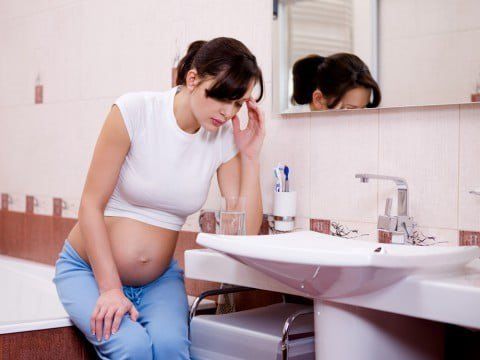This is an automatically translated article.
Abdominal pain or discomfort after eating has many causes. Abdominal pain that occurs after eating and goes away on its own is usually caused by the food and does not require medical attention. However, if accompanied by other symptoms or constant cramping despite dietary changes, the cause may be due to a serious medical condition, you should consult your doctor.
1. Common Causes of Abdominal Pain After Eating
1.1. Difficulty digesting food causes abdominal pain People with indigestion often feel abdominal pain, discomfort in the upper abdomen. Indigestion can also lead to feelings of fullness early in the meal, bloating and gas, and nausea.
About 20 - 30% of people with dyspepsia are diagnosed with a gastrointestinal condition, so you should see your doctor to rule out serious health problems.
If your doctor can't find a specific cause, you may have a "functional digestive disorder". This is a type of functional digestive disorder where there is no obvious pathology, but the digestive organs do not function properly.
Fatty foods, caffeine, sugary drinks and alcohol can make indigestion worse.
1.2. Gastroesophageal reflux disease (GERD) Gastroesophageal reflux disease (GERD) is a condition in which acid from the stomach backs up into the esophagus. Symptoms of GERD are a burning sensation in the esophagus, pain when swallowing.
Acid secreted by the stomach can damage the esophagus, so it's better to talk to your doctor for proper treatment if you have frequent reflux.
1.3. Pancreatitis causes abdominal pain after eating Pancreatitis can cause stomach cramps after eating. Pain usually begins in the upper abdomen and spreads to the back and is accompanied by nausea and vomiting.
The most common cause of pancreatitis is heredity, drinking alcohol, gallstones, smoking can also increase the risk of the disease. If pancreatitis is suspected, you should seek medical care immediately.

Khó tiêu hoá thức ăn gây đau bụng sau khi ăn
1.4. Peptic ulcer If stomach pain after eating occurs anywhere between the breastbone and navel, it could be a peptic ulcer. Peptic ulcers can be painful even when your stomach is empty.
Non-steroidal anti-inflammatory drugs (NSAIDs) such as Ibuprofen, Aspirin, and Naproxen can lead to peptic ulcers, especially if taken for a long time.
The most common bacteria that cause stomach ulcers is Helicobacter pylori (H. pylori). It is important to treat H. pylori, because according to some studies this bacteria has been linked to stomach cancer.
Mild gastritis can be treated at home with medication, dietary changes, avoiding acidic foods, and eating small meals.
1.5. Gallstones cause abdominal pain Symptoms appear in the middle or lower right flank, spreading to your back or right shoulder; accompanying symptoms such as nausea and vomiting.
Gallstones can sometimes give you an upset stomach after eating. This is especially common after a large or fatty meal.
If symptoms of pain appear on an empty stomach, severe pain with fever, you may have cholecystitis. Need to go to a medical facility for timely surgery.
1.6. Irritable Bowel Syndrome Irritable bowel syndrome is a medical condition in which a person experiences chronic (persistent) abdominal pain. Symptoms in each person can be different such as: Diarrhea, constipation, feeling of intestinal spasms, bloating. Abdominal pain and bloating after eating due to irritable bowel syndrome usually occurs in the area around the navel. Eating and drinking can stimulate strong contractions in the intestines causing abdominal pain.
About 30% of people with indigestion also have irritable bowel syndrome.
Although there is no cure, lifestyle changes can help. You should eat slowly, avoid high-fat and processed foods, exercise regularly, don't use alcohol or sugary drinks, eat right meals.
1.7. Food Poisoning Abdominal cramps after eating are a common symptom of food poisoning, usually appearing several hours after eating. Other symptoms include: vomiting, diarrhea, fatigue, fever. Food poisoning usually lasts only a few days, mainly treated at home with rest and adequate hydration.
Some foods irritate the stomach such as acidic foods, spicy foods or drinks such as caffeine, alcohol. After consuming the above foods, they can irritate and cause abdominal pain symptoms.

Đau quặn bụng sau khi ăn là một triệu chứng phổ biến của ngộ độc thực phẩm
1.8. Food allergies or intolerances Some people may have a bad reaction to certain foods, such as a food allergy or intolerance. You may need to avoid those foods in the future.
The body's immune response to food can cause many symptoms including abdominal pain. Some common food allergens such as fish, seafood, milk, peanuts.
Food intolerance is a milder form of allergy in which the digestive system is irritated by certain foods and has difficulty digesting them properly.
Common intolerances include gluten, wheat and lactose.
1.9. Eating too much causes stomach pain Feeling full, uncomfortable in the upper abdomen after eating is a sign that you are eating too much. Eating too much in the stomach regularly will not be good for health.
2. When to see a doctor
If stomach pain after eating persists for a long time and lifestyle and diet changes do not help, people should see a doctor. You should go to the emergency room if you have severe pain along with any of the following symptoms: Jaundice, fever, chills, severe vomiting.
Your doctor can help diagnose the cause of your abdominal pain by hearing about your symptoms. Other tests and laboratory tests are also prescribed by the doctor to help confirm the diagnosis, such as gastroscopy and colonoscopy, abdominal X-ray, CT, MRI, blood count...
Abdominal pain After eating is usually caused by eating problems, not serious and you can treat at home. Treatment for abdominal pain will depend on its cause and its complications.
Some measures you can take to prevent stomach upset after eating, such as controlling your portion sizes each day, avoiding foods that cause allergies and intolerances, eating a diet rich in fruits and nutrients Fiber, drink lots of water.
Abdominal pain after eating can be a sign of many other serious digestive problems. If this symptom does not get better despite all the methods you have tried, see your doctor to get the exact cause diagnosed and find the right treatment.
Please dial HOTLINE for more information or register for an appointment HERE. Download MyVinmec app to make appointments faster and to manage your bookings easily.




